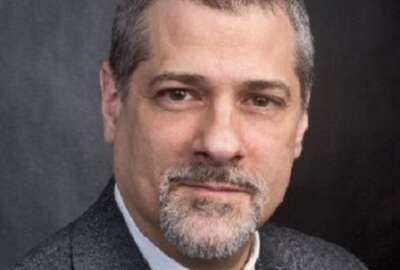
Upgrading federal agency apps? USDS can help
One of the original goals of digital transformation is to fully eradicate paper processes. The U.S. Digital Service is helping push agencies further toward meeting...

In 2015, the U.S. Digital Service team embedded within the Department of Homeland Security helped CBP relaunch its trusted traveler program. Stephanie Neill, executive director of the DHS branch, said the key to rebuilding applications comes from breaking the app into smaller, more manageable pieces and ensuring the application managers are involved in the reboot from start to finish.
“Setting up test-driven development was one of our major pushes with the developers on that project. We had a ton of support from the CIO which made that possible,” Neill — who joined the team in 2016 — said on Federal Monthly Insights — Application Services Month.
What was supposed to take 18 months with a contractor alone, took closer to 10 months with the help of USDS.
Updated federal applications aren’t always tested internally. Sometimes agencies have to leverage the public and rely on usability testing. But how can an agency be sure that the app is working properly and essentially better than the original?
“That’s the thing about usability testing … It’s qualitative research,” Neill said. “So you try to back that with metrics once you launch and you look at the full picture that way.”
Another project Neill team is known for is the seemingly endless stack of forms and paper logs USCIS has worked to move to an online platform. The project began in the early 2000s, but the agency found it couldn’t handle the load alone — and the project was scrapped.
Four years later, USDS stepped in and has helped the agency modernize its data and forms collection significantly.
“I believe [then] they had close to 10 percent online, so they had started to make some progress. But they now actually have about 50 percent of their workload online, so they’ve definitely made some huge gains over the past four years [for] the processing piece, as well as the intake or e-filing for users,” she said. “It really is a system of systems … Some things are easier, but some things are harder.”
Streamlined process
The first question someone might ask when looking into changing an application is “How?”
Neill said user research is where the USDS begins. They use a process called a ‘discovery spring.’ It is an effort that utilizes time-boxed research and analysis.
“We sit with users, we watch the process go end-to-end … and we understand where are the pain points … And where are the areas where technology can make things easier,” she said.
Working closely with subject matter experts and the agency also helps the digital service ensure the programs they build are able to deliver the right product and processes. Neill said there were a number of legacy systems within USCIS — at the time the Digital Service came in — that could’ve been isolated and modernized in a way that it could be used with their existing Electronic Immigration System (ELIS) storage program.
It comes down to old code vs. new code. But how can an agency make sure the new code reflects the same business processes as the old one? How much of the original Java code was reusable when USCIS made the switch?
“I want to say in 2015 — possibly 2016 — the CIO at USCIS decided they wanted to move toward a micro-service architecture. So at present it was basically this huge monolith of code that if you make one change, it could break something completely unrelated … which is obviously a huge risk,” she said on Federal Drive with Tom Temin. “So the IT group as a whole actually started this new strategy to start breaking off and building out microservices and they have made a lot of great progress on that front.”
Breaking the process into smaller services actually reduces the burden on developers and isolates the code. In other words, it reduces the risk when you’re launching new features and new codes. The microservices can then, in some cases, be redeployed for other applications.
Age of mobility
One of the original goals of digital transformation was to fully eradicate paper processes.
At the beginning of these efforts, applicants for citizenship sometimes still had to go to the agencies, interview for the position and then validate information and sign a sheet of paper. Neill said the USDS has since introduced the usage of iPads for signatures.
She said the app on the iPad can then connect to the ELIS system and the applicant can verify their information that way. This eliminates the need for a paper signature.
Paper-to-digital transformations are sometimes difficult, especially when no legacy system or digital application exists. When building new applications, both mobile and desktop, Neill said phased roll-outs are the way to go to test these products.
She talked more about the I-90 Green Card renewal project — which she explained in more detail for Federal News Network back in April — that USDS worked on with USCIS, where they were able to take the renewal process online. They are still working on streamlining the application to better serve immigrants, and those seeking asylum.
“People are identified by what is called their alien number. There has been a huge technology push on the back-end to move toward a person-centric system, that way we can identify all the different benefits that a person is eligible for, or involved in receiving, quickly,” she said.
Copyright © 2025 Federal News Network. All rights reserved. This website is not intended for users located within the European Economic Area.
Steff Thomas is a digital editor at Federal News Network.





